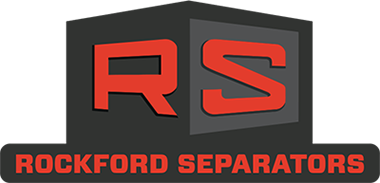Grease Interceptors
Interceptors are mainly used for one product. There are grease interceptors, solids interceptors, hair interceptors, lint interceptors, etc….but each unit can only be used for its intended purpose. In some cases, a combination of two units is required. Example: A solids interceptor should be used in front of a grease interceptor. All interceptors require an external flow control in front of it. Some will have a restrictor on the inlet of the interceptor and call it a built-in flow control. It is still on the front end of the interceptor and does not allow the waste to enter the interceptor unobstructed. External flow controls are nothing more than a blockage in the inlet line.
GREASE INTERCEPTOR SIZING
PDI METHOD THREE COMPARTMENT SINK
1st – determine the cubic content of the fixture by multiplying length x width x depth.
2nd – divide that by 231 (231 cubic inches = 1 gallon) to get the gallon capacity of the fixture.
EXAMPLE:
1- three compartment sink
| 20 x 20 x 12 x 3 | = | 14400 cu in | = 62.34 Gal |
| 231 | 231 |
EXAMPLE:
62.34 gallons x 75% = 46.76 gpm which would be a 50 gpm unit with a 1 minute drain down time.
With a 2 minute drain time a 25 gpm unit can be used with its appropriate flow control device installed.
The flow control fitting must be in place for these units to operate as designed!
PLEASE NOTE:
For installations where a dishwasher is installed please contact Rockford Separators or your local manufacturer’s representative.
HOW TO CLEAN THE INTERCEPTOR ALL MODELS
For a passive grease interceptor to perform as designed, a strict maintenance schedule must be followed. If adequate maintenance is not performed, excessive grease buildup will occur until water, laden with grease, passes directly through the unit. Therefore, no matter how efficient the design or how proper the installation, these units perform only as well as the maintenance routine allows.
Cleaning and Maintenance Instructions should accompany every interceptor. It is a good practice to have a copy of the cleaning instructions located near the interceptor, directing the user on the proper operation/cleaning methods.
- Remove floating grease.
- Remove solids from the bottom of the unit.
- Inspect gasket for damage and replace if necessary.
- Replace cover and secure cover tightly.
- Grease and other waste matter that has been removed from the interceptor should not be introduced into any drain, sewer, or natural body of water. This waste matter should be placed in proper containers for disposal.
NOTE:
Cover gaskets are necessary to seal against gases and to prevent overflows. They must be heavy and elastic enough to give easy sealing.
Interceptors are not pressure vessels. Covers should be easily removable. When an interceptor is set in the floor, stainless steel bolts should be used (brass bolts are too easily stripped; steel bolts become rust locked).
NOTE:
Interceptors not easily opened for cleaning will not be cleaned regularly.
Many products are sold as aids to seemingly clean grease interceptors. These include acids and caustics with known hazards in handling, or so-called “miracle enzymes” with limited conditions and special instructions. These type of products are NOT RECOMMENDED because of the damage they can do to the interceptor, as well as the fact that the interceptor catches the grease at the point of use to be disposed, and not to give the user a vessel to add chemicals into the waste stream.


